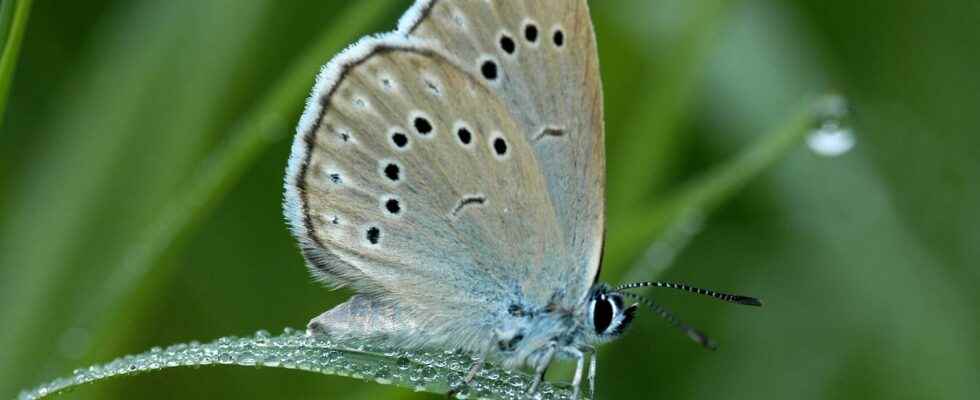At the end of this scorching summer, when everywhere in the world, from China to the United States via Europe, there are only yellowed landscapes, empty lakes, cracked riverbeds and charred forests, a small piece of countryside in the south of England embodies hope.
>> China: social networks illustrate a historic heat wave and drought
Thousands of blue butterflies with black dots twirl there from flower to flower, to the great surprise of biologists since this species of butterfly has been declared extinct in the country since 1979. Phengaris arionfrom its Latin name, “The Large Blue” in English, called here l’Azuré du serpolet, is classified on the list of the International Union for the Conservation of Nature (IUCN) as near threatened globally, and therefore extinct in England.“Off” until two researchers decide to save him.
In 1983, four years after its extinction across the Channel, Sarah Meredith and David Simcox decided to introduce large blue caterpillars collected by them in Sweden into test meadows. As David Simcox explained to the BBC, the first years were thankless, not offering the expected multiplication of butterflies. And then, by taking care of the land, by letting these meadows develop without intervention, without trampling, without spreading pesticides in the surrounding fields, without pumping water from the groundwater, the graft ended up taking hold.
#PRESS #RELEASE:
Rare #insects and #plants driving under the wing of the globally #endangered #Wide #blue #butterfly we restored #grasslandsRead the #PressRelease here:https://t.co/iq0Rd0OnZR#Entomology #Science@NaturalEngland @WildlifeTrusts @EntsocAmerica @amentsoc pic.twitter.com/xAl7emqVcD
— Royal Ent Soc (@RoyEntSoc) August 25, 2022
Last week, the Royal Entomological Society announced that the summer of 2022 was officially the most prolific for the species in 150 years of observation. 750,000 butterfly eggs this year, compared to 10 000 on average in the years following their reintroduction, i.e. 75 times more. This year, 20 000 butterflies have completed their metamorphosis and taken flight out of their chrysalis.
A record… and unheard of, which makes these English “big blues” the largest listed colony in Europe. And that means that if we make every effort to meet the needs of endangered species, we can reverse the trend and counter the decline. The butterfly needed flowers, therefore areas left fallow, without pollution, for foraging, of course, but also to be able to find colonies of red ants there, colonies which feed it in its life as a caterpillar, and which, too, have need the same conditions to flourish. An experience that shows that it is possible, that we know how to obtain abundance, the real one, the good one, that of the good earth for everyone, butterflies included.
